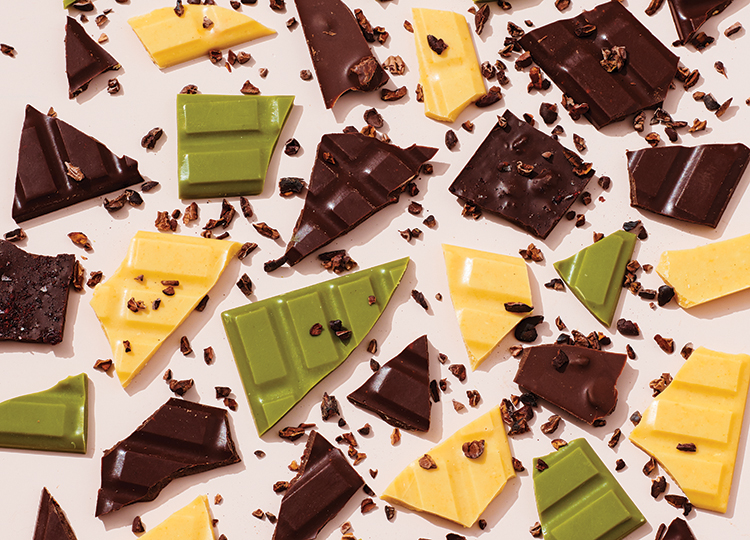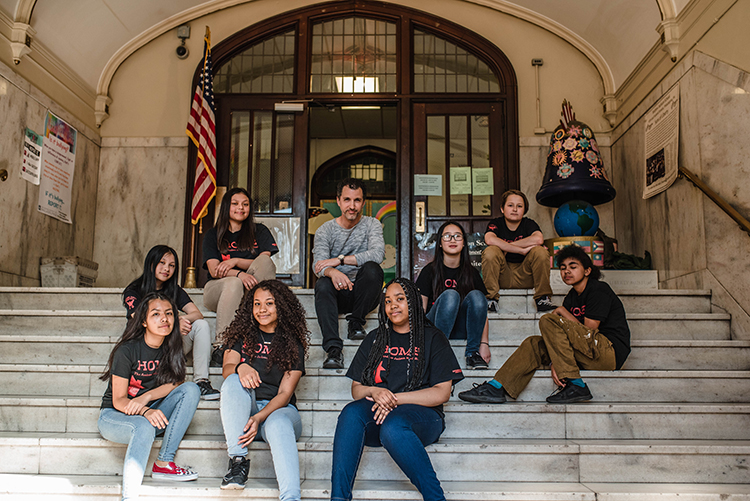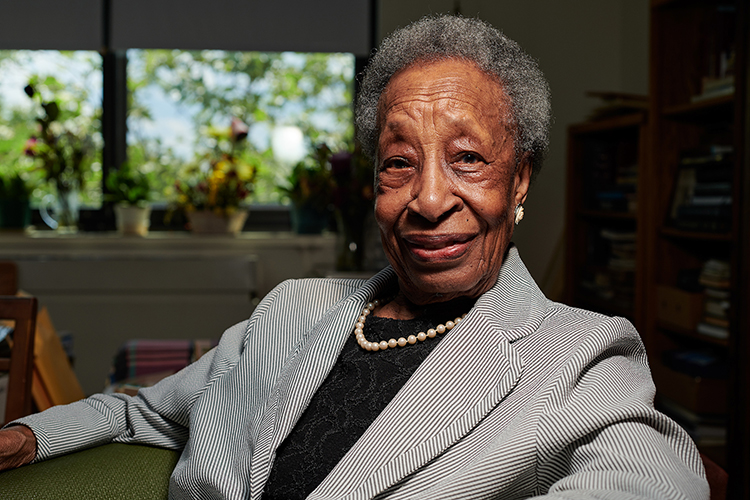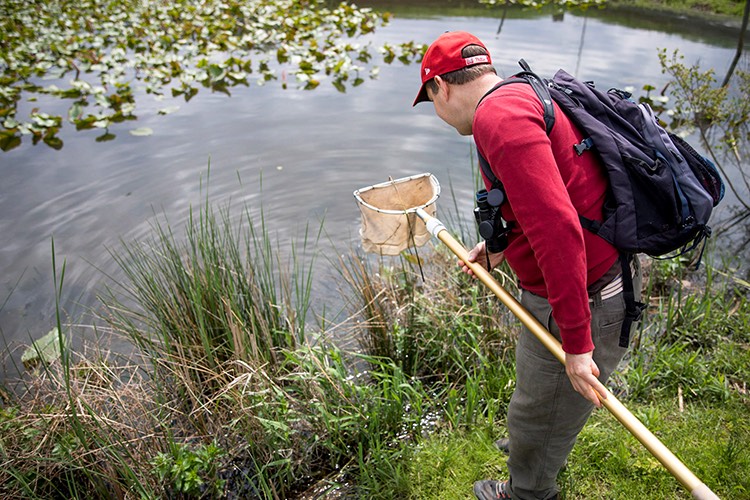Photo by Ian Shiver
By Estelle Tracy
As a local food supporter, you know where your food is coming from. You pick berries at the orchard and get Brandywine tomatoes from the farmers market. Over time, you even develop a preference for a coffee origin.
But what about chocolate?
Pick any bar from your stash and check the label—odds are you won’t find where the cacao beans are from.
Chocolate is made from cacao beans (commonly known as “cocoa beans”), which are the seeds of the Theobroma cacao or cacao tree. These trees grow in areas with tropical climates, between 20 degrees north and south of the equator—a region sometimes referred to as the Cacao Belt.
West Africa is responsible for about 70 percent of the world’s cacao production, most of it commodity grade. Large chocolate companies have long relied on bulk-quality beans to create a consistent product. Companies like Hershey and Mars cornered chocolate as a singular flavor, one synonymous with Halloween candy and fudgy brownies.
An affiliate faculty of African studies at the University of Washington, Kristy Leissle, Ph.D., explains that the cacao trade was set up as part of European colonialism.
“The commodity trade of cacao is designed to keep cocoa cheap and chocolate companies comparatively rich,” she explains. “It was set up as part of the much larger system for getting many agricultural products and minerals out of colonies and into Europe … Without that colonial setup, I think it would have been much harder to set up [the] cocoa trade on the scale that it exists today.”
While that system brought chocolate to grocery stores, its colonial roots laid the foundation for widespread poverty on plantations.
Leissle considers poverty to be one of the most serious issues faced by cacao farmers worldwide.
For the past 20 years, she has worked, traveled and conducted research throughout Africa and currently calls Ghana home. Unlike poverty in other parts of the world, cacao farmers aren’t struggling with food.
“Poor farmers aren’t starving,” she explains, “they’re farmers, they can grow their food.”
Rather, lack of access to clean water and sanitation are hallmarks of their poverty.
In her book “Cocoa,” Leissle explains: “there is no single industry definition of cocoa sustainability.”
However, based on her research and observations, she offers this one: “sustainable cocoa is [farmers being] compensated well enough that [they] want to continue growing it as their primary employment, within a climatic environment that can support its commercial existence over the long term.”
Taking that definition into account, three Pennsylvania companies are striving to create a more sustainable future for cacao.
Miller Chocolate
One way to improve farmer revenue is to develop a market for specialty beans sold at a premium price—the very type of beans that Miller Chocolate sources to create their award-winning bars, says Nathan Miller, the company’s co-founder.
The Chambersburg, Pennsylvania-based company is one of 200 bean-to-bar or craft chocolate-makers in the United States. While there’s no agreed-upon industry definition on either phrase, bean-to-bar makers typically pride themselves on sourcing cacao beans ethically.
The multiple-day process relies on a series of elaborate steps, which includes roasting—“not over-roasting,” insists Miller, a technique large companies use to hide flaws in bulk cacao beans—and grinding the beans, as well as tempering and molding chocolate bars.
A trained pastry chef, Miller’s chocolate journey started in Colorado, where a bite of a single-estate Madagascar chocolate from French chocolate company Michel Cluizel changed his life. The bright citrus notes and lack of bitterness inspired him to order chocolate-making equipment and begin experimenting with different beans in his basement.
In 2013, he and his business partner, Chelsea Russo, relocated Miller Chocolate (then Nathan Miller Chocolate) to Chambersburg because of the town’s proximity to large cacao ports in Philadelphia and New Jersey. There, the two converted an old industrial building into a chocolate-making facility and café.
What defines specialty beans is good fermentation, cleanliness and, of course, taste.
“We’ve developed a list of criteria to select beans,” explains Miller, “the first of which is flavor.”
Russo also emphasizes the importance of financial viability for their business.
“We look for stable partner farms that are able to provide large volumes [of beans] for years to come,” she says.
A three-hour ride from Center City Philadelphia, the factory’s café serves as temporary storage for the large bags of beans that make the cut. At the counter, the colorful wrappers proudly display the origin of the beans in each bar—Ghana, Peru, Dominican Republic and Madagascar. Each single-origin bar carries the promise of a flavor journey like the one that ignited Miller’s passion.
To appeal to a wide range of palates, the company also offers playful inclusions, like buttermilk, camel milk, and they recently released a peach-grapefruit white chocolate.
Priced in the $9-$15 range, Miller Chocolate bars are carried across 250 partners around the country, including Primal Supply, ReAnimator Coffee and Whole Foods Market in Philadelphia.
Repurposed Pod
Taking the specialty approach to cacao isn’t the only way to increase farmer income.
For nine years, Robert Weidner of Lititz, Pennsylvania, sourced commodity-grade beans for large, Pennsylvania-based chocolate companies. The position took him on sourcing trips across cacao-producing countries. There, he saw the impact of a volatile cacao market. In prolonged periods of price depression, farmers may choose to replace cacao with other profitable crops, such as plantains in Latin America, rubber in Africa or palm in Asia.
For flavor development, cacao beans must be fermented with some cacao fruit pulp, but in excess, the flesh will decrease the beans’ quality. While doing custom fermentation work in Ecuador, Weidner realized that this excess pulp was discarded to keep producing the best-quality beans.
It was a realization that opened his eyes to a potential market within the chocolate industry.
“Cacao is a fruit,” he explains, “and the flesh has been consumed for millennia.”
The pulp is quite sweet and tastes nothing like chocol
ate. Instead, it combines the mildness of a pear with the acidity of a lime.
Together, with his wife, Kayla, he wondered: Could they collect the flesh and turn it into juice?
The answer was yes. So they tapped into their savings and co-founded Repurposed Pod, the very first cacao juice company in the world.
To bring the drink to market, the company partnered with an exporter that owns a farm in Ecuador—where Repurposed Pod built its juice facility.
“This made the most sense, given the farm’s proximity to other farmers, shortening the supply chain and minimizing the time from cut to receipt at the facility,” Robert says.
Repurposed Pod compensates participating farmers for the simple task of collecting cacao flesh. If the flesh meets internal quality standards, the company doubles the payment. This outlet for what was considered agricultural waste provides farmers with a fixed, additional income of $175 per metric ton of cacao. For reference, a metric ton of cacao traded in the $2,000-$2,850 range over the past 12 months.
The cold-pressed fruit juice made its debut in late 2017, and in the spring of 2018, Repurposed Pod began selling shelf-stable cartons.
The drink now has a roster of prestigious clients, including New York restaurants Gabriel Kreuther and Daniel. The juice’s balance of sweet and acidic lends itself to countless uses, often slipped into cocktails, smoothies, ice cream and beer. In West Chester, Pennsylvania, Éclat Chocolate even turns this juice into sugar-coated pâtes de fruits, or jellified fruit paste.
Repurposed Pod’s cartons are available today at 350 retailers nationwide.
This is just the beginning for the Weidners, who have big ambitions, both for their cacao farmers and their company. They plan on developing a line of cacao-based products, setting up the juice as a flagship product.
“Ultimately, we want cacao fruit to become a secondary commodity that will drive value for the farmer,” Robert explains. “We hope we can be [the] catalyst of that change.”
La Chocolatera
Other chocolate-makers like David Truskinoff rely on trustworthy brokers to source their beans.
Since February of this year, the founder of La Chocolatera has been serving single-origin Bolivian drinking chocolate from his electric food truck around Philadelphia.
His cacao journey started on Broadway.
Truskinoff had spent three decades as a music conductor working on musicals including Rent and Hair when he started itching to get his hands dirty.
The cacao seed was planted two years ago, when he came across an article describing the unsavory sides of cacao growing, such as rainforest deforestation and child labor. When he discovered Giselle Weybrecht’s blog, “Ultimate Hot Chocolate,” he knew he’d found a medium to express himself.
“I thought it was so cool,” he says, but instead of simply melting industrial chocolate into milk, Truskinoff decided to make his own, starting with sustainably sourced cacao beans.
He spent an entire year learning to use two cacao grinders and experimenting with different bean origins and sources.
“I did a lot of research,” Truskinoff explains, “and looked into several distributors before selecting Uncommon Cacao to get beans.”
A cacao broker built on the principle that “farmer prosperity is a key ingredient in good chocolate,” Uncommon Cacao was founded in 2010 “to create meaningful market access for smallholder cacao farmers.”
The company currently carries 15 different cacao origins; for each, it provides a detailed bean price sheet. Truskinoff chose Bolivian beans from the Alto Beni Cacao Company because of their chocolatey flavor and lack of bitter notes. Alto Beni’s bean sheet discloses the number of female farmers (89), the average annual income per farmer ($464) and how much growers receive for their beans (twice the price of the West African farm gate price).
This winter, Truskinoff created three beverages using Alto Beni beans: a classic, 68% dark chocolate concoction, a sweeter dulce, with a 56% cacao content, and a mint version.
The former conductor prides himself on the care poured into each drink.
“I add the mint during the chocolate-making process,” he says, “not as an oil in the cup.”
This summer, La Chocolatera will serve the same recipes in different forms—think frozen frappés, chilled chocolate on tap and fudgesicles. His favorite? Nitro chocolate.
“It has a creamy mouthfeel,” he says. “It’s delicious.”
Running La Chocolatera hasn’t come without challenges, however. The manufacturer of his electric food truck, eStar, closed in 2013, and it’s proved difficult to service. In addition, the vehicle uses a lot of power, which requires a generator that “defeats the purpose of running an electric food truck.”
Still, Truskinoff refuses to be discouraged. He partially offsets the business’s environmental footprint by serving chocolate drinks in biodegradable paper cups, handing out recycled paper napkins and skipping the plastic straw.
“I’m really doing my best,” he says. What keeps him going is the conviction he feels having found his new passion.
“Nothing feels better than working with cacao beans,” he says.







Lovely article. Thank you for making this easy to read and the wonderful chocolate recommendations!